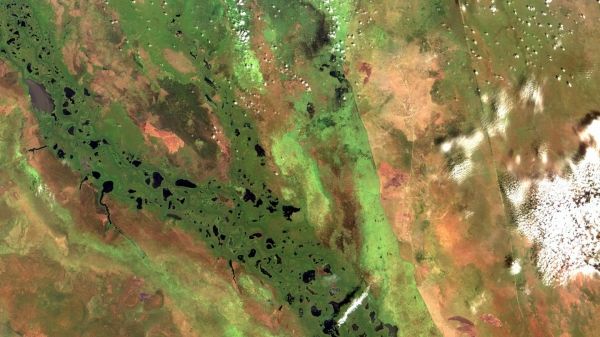Concentrations of methane, a greenhouse gas about 28 times more potent than carbon dioxide, have risen steadily in Earth’s atmosphere since 2007. Although several potential explanations, including an increase in methane emissions from the tropics, could account for this upsurge, due to a lack of regional data scientists have been unable to pinpoint the source. Now a study published in the European Geosciences Union (EGU) journal Atmospheric Chemistry and Physics uses satellite data to determine that one-third of the global increase originates in Africa’s tropics.
“One of the suggestions for the continued rise in atmospheric methane, based on ground-based data, is that tropical sources have increased,” says Mark Lunt, an atmospheric scientist at the University of Edinburgh and lead author of the study. He and his co-authors used data retrieved from GOSAT, the Japanese Greenhouse gases Observing Satellite, to examine annual—and even seasonal—trends in Africa between the latitudes of 26° N and 26° S.
“There are very few studies that have focused in detail on Africa, primarily because there isn’t much atmospheric methane data from there,” says Lunt. “Using satellite data gives a unique perspective on the continent that wouldn’t otherwise be available.”
Read more at European Geosciences Union
Image: Satellite data have detected a short-term boost in methane emissions from the Sudd, one of the world's largest wetlands. (Credit: Coordenação-Geral de Observação da Terra/INPE via Flickr)


